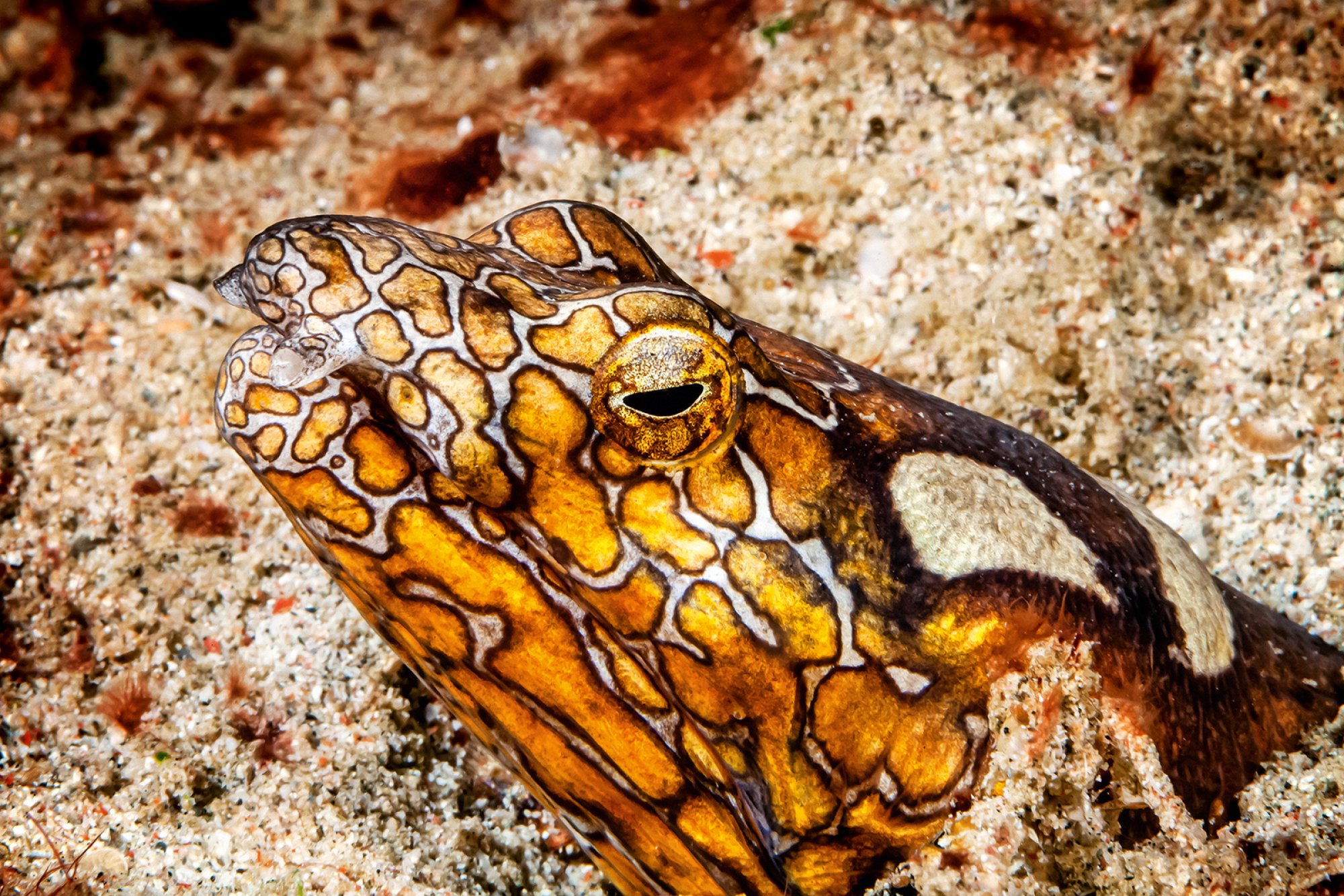Snake Eel
The Docile Snake-Like Bottom Dweller
Snake eels are easily identifiable by their long, snake-like bodies and pointed tail and snout. They can range in length from 5 cm (2 in) to 2.3 m (7.5 ft) long and typically exhibit colorful spots or stripes. The name “snake eel“ represents over 200 marine fish species within the Ophichthidae family, all of which are more docile than their aggressive cousins, the moray eels. Snake eels live throughout the world, mostly in warm, tropical waters or temperate locations. They have a wide range of habitats, from shallow reefs down to the depths of the ocean.
Snake eels use their pointed tails to burrow backward into the sandy ocean floor or rocky reef to hide from predators. Most species lack fins to make their backward, slithering escape easier. Seeing a snake eel is a thrilling encounter. Look for them along the seafloor as they are typically bottom dwellers that like to hide in the sand or mud and stock their prey of small fish and crustaceans. Explore the map below to find out where you can dive with snake eels.
Dive Sites with this Animal View more on map

★★★★★ USAT Liberty Wreck
This is the only historical shipwreck in Bali, ranked #3 in the world for Wreck diving! The wreck is 25 meters form shore at a depth of 4 to 29 meters below the surface with most of it occuring in a shallow area. This dive site does not have strong currents, has clear water, and warm temperatures. Difficult entry!

★★★★★ Pyramid Point
Artificial coral reef placed on the sandy bottom with depths varying from 10 meters to 25 meters. The basis of the coral growth is made of rectangular concrete arranged like a small pyramid. It is one of the best places to witness a successful artificial reef.

★★★★☆ Tugboat
Tugboat is Curacao’s most famous dive and snorkel spot due to its shallow depth. It was wrecked just off the shore of Caracasbaai and sits in only 15 feet of water. The tugboat is crawling with marine life and is now covered in sponges and coral growth.

★★★★★ Salt Pier
Active pier for loading salt from the salt works on the island of Bonaire. It can only be dived when no ship is moored, and no maintenance is being performed.

★★★★★ Koh Bida Nok
This is one our favourite dive sites since it has the widest range of wildlife. The reef gently slopes down from the island apart from the wall at the south west which drops 22-26 meters.

★★★★★ Viking Cave
Viking Cave has a striking bay and a beautiful cave above the water, but the real deal is underwater a few hundred meters to the north of Viking Cave. A few years ago, the Phuket Marine Conservation department put down a beautiful artificial reef to re-establish marine life after the tsunami.
